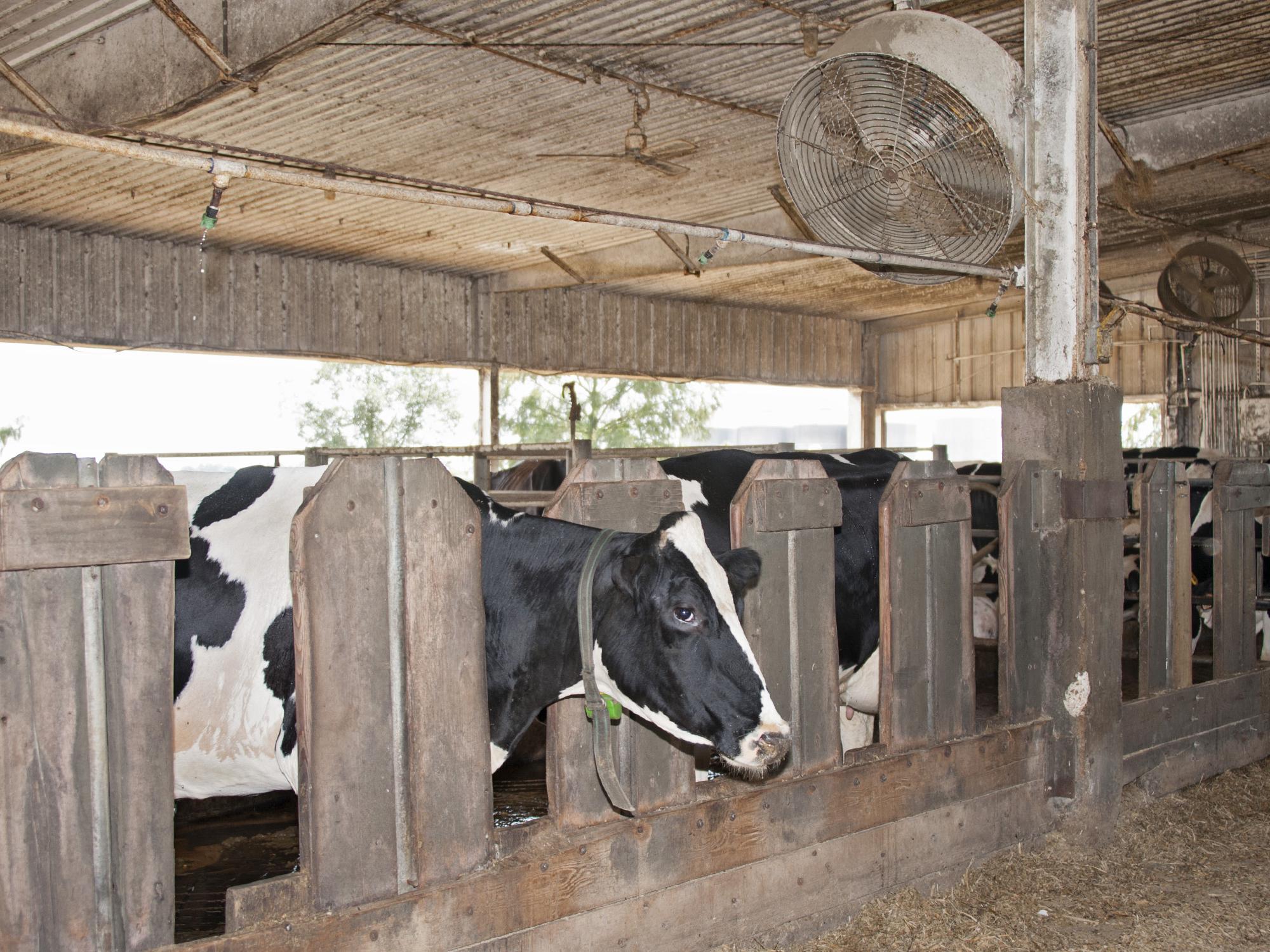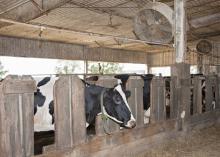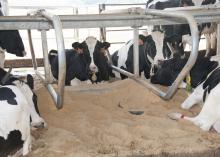Information Possibly Outdated
The information presented on this page was originally released on September 13, 2013. It may not be outdated, but please search our site for more current information. If you plan to quote or reference this information in a publication, please check with the Extension specialist or author before proceeding.
Feed prices challenges state's dairy industry
MISSISSIPPI STATE – 2013 continues the trend of high feed prices, making it very challenging for Mississippi dairy farms to make a profit.
Lamar Adams, dairy specialist with the Mississippi State University Extension Service, said prices farmers are paid for their milk have been higher than in recent years, but feed prices have remained much higher than ever before.
“The silver lining dairy producers are seeing now is that feed costs are coming down some,” Adams said. “Should we get in a situation again where there are very tight profit margins, a lot of our existing farmers would probably be forced out of business.”
The state has about 100 dairy farms in operation, down from 105 at the beginning of the year. Most Mississippi dairy farmers base their herds’ diets on pasture and stored forages supplemented with corn-soybean meal concentrate feeds.
“The goal of dairy production is to maximize dry matter intake so the cows receive an adequate level of nutrition necessary to produce acceptable volumes of milk,” Adams said.
The cost of these high-priced concentrate feeds drives up the cost of milk production. Mississippi dairy producers try to grow as much high-quality forage as possible on their farms to reduce the need for more expensive feeds.
This year’s wet spring made it difficult to harvest ryegrass hay on time, and farmers who grew corn for silage were delayed getting that crop planted.
“Despite delayed plantings, we’re seeing record corn silage yields in many areas this year,” Adams said. “Most dairy farmers are going to have plenty of hay, but the quality of some of it won’t be as high as it would have been if they were able to harvest it at a less mature, more nutritive stage.”
Adams said dairy cows in Mississippi produced an average of 14,357 pounds of milk per cow in 2012 -- well below the national average of 21,697 pounds per cow. The difference was due almost entirely to the effects of summer heat, which limit the performance of dairy cattle and summer forages.
“When it gets hot, cows try to cool themselves down,” Adams said. “Their natural defense is to eat less in an effort to stay cooler, but lower feed intake translates to decreased milk production.”
Mississippi dairy producers have several methods of keeping cattle as cool and comfortable as possible in the summer.
“The primary key to dealing with heat stress is to make sure the cows have constant access to plenty of cool, fresh and clean drinking water,” Adams said.
Natural and manmade shade is important, and cooling systems have been installed in barns and milking parlors. Some dairies use free-stall barns equipped with fans and sprinklers to keep cattle cool, comfortable and clean while they eat and lounge in sand-filled beds.
Kenneth Graves, manager of the MSU dairy herd of Holstein and Jersey cows, said heat stress reduces a cow’s milk production by 10 to 12 percent.
“Cows don’t sweat like we do, and they’re stuck in the summer heat with a leather coat on that has fur,” Graves said. “We use a lot of sprinklers and fans to cool their bodies with evaporative cooling. When it’s 100 degrees outside with 96 percent humidity, we can get the temperature inside the free-stall barn to feel like the low 80s.”
Despite the heat, MSU Holsteins each produce about 27,000 pounds of milk per year, and MSU Jersey cows each produce an average of 23,000 pounds of milk per year.
Brian Williams, an MSU Extension Service agricultural economist, said September Class III milk futures are trading at $18.19 per hundredweight. October futures are slightly lower at $18.07 per hundredweight.
“Milk prices had been declining from mid-July until about mid-August when October futures hit a low of $17.40 per hundredweight, but they have been slowly recovering since then,” Williams said. “Increased production and an increase in stored dairy products have been driving milk prices.
“Currently, the amount of cheese and butter in storage is limiting how high prices can go, although we have seen record exports through the first half of the year,” he said.
A record corn crop has been bringing feed prices down substantially in recent weeks, and Williams said decreasing costs of feed and better milk prices may result in increased milk production.





